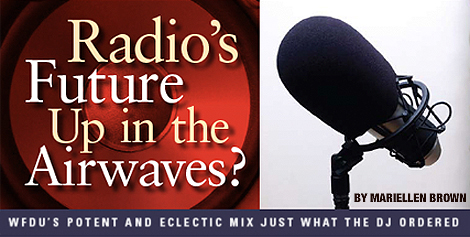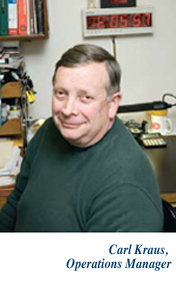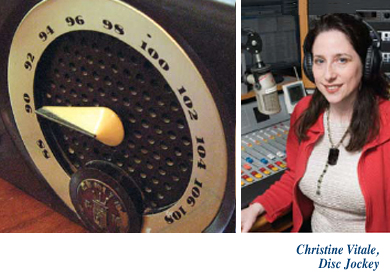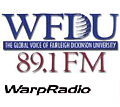



Radio has a way of proving its critics wrong. Skeptics have been predicting the demise of radio for more than a century. Even as radio was celebrating its Golden Age of Fireside Chats and audio theater, some weren’t convinced. As soon as television entered the scene, radio was pronounced dead.
And the challenges grew from there: eight-track and cassette-tape players steered captive drivers away from the airwaves; MTV boldly debuted with their first video, The Buggles’ “Video Killed the Radio Star”; Sony’s walkman and discman made music portable. Then came Napster, MP3 and WAV files, CD-R, MP3 players on cell phones, Internet streaming, satellite radio, podcasts and perhaps the most threatening of all — the iPod — all working to put the final nails in radio’s coffin. Is this it for radio? Are the predictions of the last century finally coming true? Or will radio find another way to dodge technology’s everchanging bullet?
If radio is to survive and thrive, it can look to a winning and eclectic formula spun together by the managers and disc jockeys at Fairleigh Dickinson’s own 89.1 WFDU-FM. According to Carl Kraus, WFDU’s general manager, most radio stations have tried to stay afloat in the tumultuous sea of new technology by hanging on to tried-and-true mainstream formatting and a hefty number of corporate sponsorships. “Ironically, though, the monotony of cookie-cutter playlists and advertisement-overload are sending even more listeners running to satellite and digital music,” he explains. “Thankfully, we do things differently here at WFDU.”
The difference is obvious within the first few minutes of listening to the station. “We’re a listener-sponsored station, so instead of filling our airwaves with commercials that make advertisers happy, we fill our airwaves with specialized, unique music that makes our listeners happy,” says Barry Sheffield, BS’74 (T), WFDU’s operations manager and program director. Hosts have an enormous amount of creative freedom, and specialty programs have attracted loyal listeners who tune in week after week. As a result, the station has brought together a community of radio professionals and listeners who share a passion for music.


WFDU’s programming spans from bluegrass to holy hip hop and covers nearly everything between. “We have one of the only children’s shows in the New York metropolitan area. We’ve got Latin, folk, gospel, swing — we even have a poetry program,” says Kraus. And they manage to fit all of their programs into a part-time broadcasting schedule. WFDU shares the 89.1 FM frequency — which was originally reserved for the United Nations — with New York University’s WNYU. Based on FDU’s Metropolitan Campus in Teaneck, WFDU is on air — and streaming online at www.wfdu.fm — from 1:15 a.m. to 3:45 p.m. Tuesday through Friday, and from 1:15 a.m. Saturday to 3:45 p.m. Monday. “Our hosts never run out of music — they run out of time in the day,” says Kraus.
The music library’s two-terabyte hard drive holds more than 70,000 songs with room for tens of thousands more. The library includes more than 10,000 albums and singles, along with 5,000 CDs. And it is growing by the day, thanks to generous alumni such as Jason Harris, AA’89 (T), BA’91 (T), and Bill Himmelman, BS’60 (T). Harris, an account executive at WBLS-FM in New York, facilitated the donation of the station’s entire R&B library to WFDU earlier this year. Himmelman has promised a donation of nearly 30,000 records to the station, many of which are rare and in mint condition. “It’s an amazing experience to play some of these albums for the first time,” says Sheffield. “We’re absolutely loving it.”

The station’s format and selection of music gives hosts an arena in which to share their passion for genres that are often overlooked in commercial radio. Christine Vitale, BA’01 (T), career development specialist at FDU, approached WFDU with an idea for an R&B/doo-wop vocal group program shortly after she began working for the University. “Over time, the public has come to demand relatively little from this genre that has so much to offer. I wanted to change that,” she explains. She now hosts “The Group Harmony Alley” on Sunday evenings and takes pride in exposing listeners to the real roots of the R&B/doo-wop experience. “I tend to steer away from expected songs and give the public a much more in-depth picture of this rich musical history.”
Many WFDU hosts also use their shows to promote local artists. “It’s important to me to support the live music activity that we thankfully still have today. I’m sensitive to serving the independent music needs of artists,” says Vitale.
Vicki Solá, longtime host of “Que Viva La Música,” WFDU’s Latin jazz show, considers promoting local artists paramount. “Here in the New York City area, we have some of music’s all-time greatest artists — plus some very talented newcomers who are the future of music and the vital links in music’s chain of survival,” she says.
On-air personalities also have the freedom to incorporate listener requests and dedications. “I take dozens of requests during ‘Let There Be Country’ and ‘The Beatles: 2 by 4,’” says Sheffield. “I encourage it and they keep calling in!”
Listeners also regularly call to give feedback and introduce hosts to new artists. “I like to think of radio as a form of two-way communication,” says Solá. “Through my listeners, I’ve met a lot of wonderful musicians, and I’ve been turned on to great music. I find out what my listeners appreciate, and also what they don’t care for, what’s going on in clubs and how the scene is changing.”
Having such an extensive selection of music and creative license over programming is a breath of fresh air for WFDU’s on-air talent. The station is almost entirely run by volunteers who have come from the professional world, and they eagerly embrace the freedom they have at WFDU. “I worked in commercial radio, where on a Monday morning, they’d throw me a stack of records and an A, B and C rotation list, and we’d play the same stuff over and over again all week,” says Solá. “When we got to the last page of the list, we’d go turn back to page one and start all over again, until they gave us a new stack of records and list. So, I truly appreciate the difference.”
Listeners appreciate the difference as well, and combine to contribute 60 percent of WFDU’s operating costs each year, which is different from many college radio stations that are supported mostly by University funding. “We have a nice partnership with our listeners,” says Sheffield. “They keep the station running, and we run the station for them.”
FDU Magazine Home | Table of Contents | FDU Home | MyFDU.net | Blog About It
©Copyright 2008 Fairleigh Dickinson University. All rights reserved.
For a print copy of FDU Magazine, featuring this and other stories, contact Rebecca Maxon, editor,
201-692-7024 or maxon@fdu.edu.
